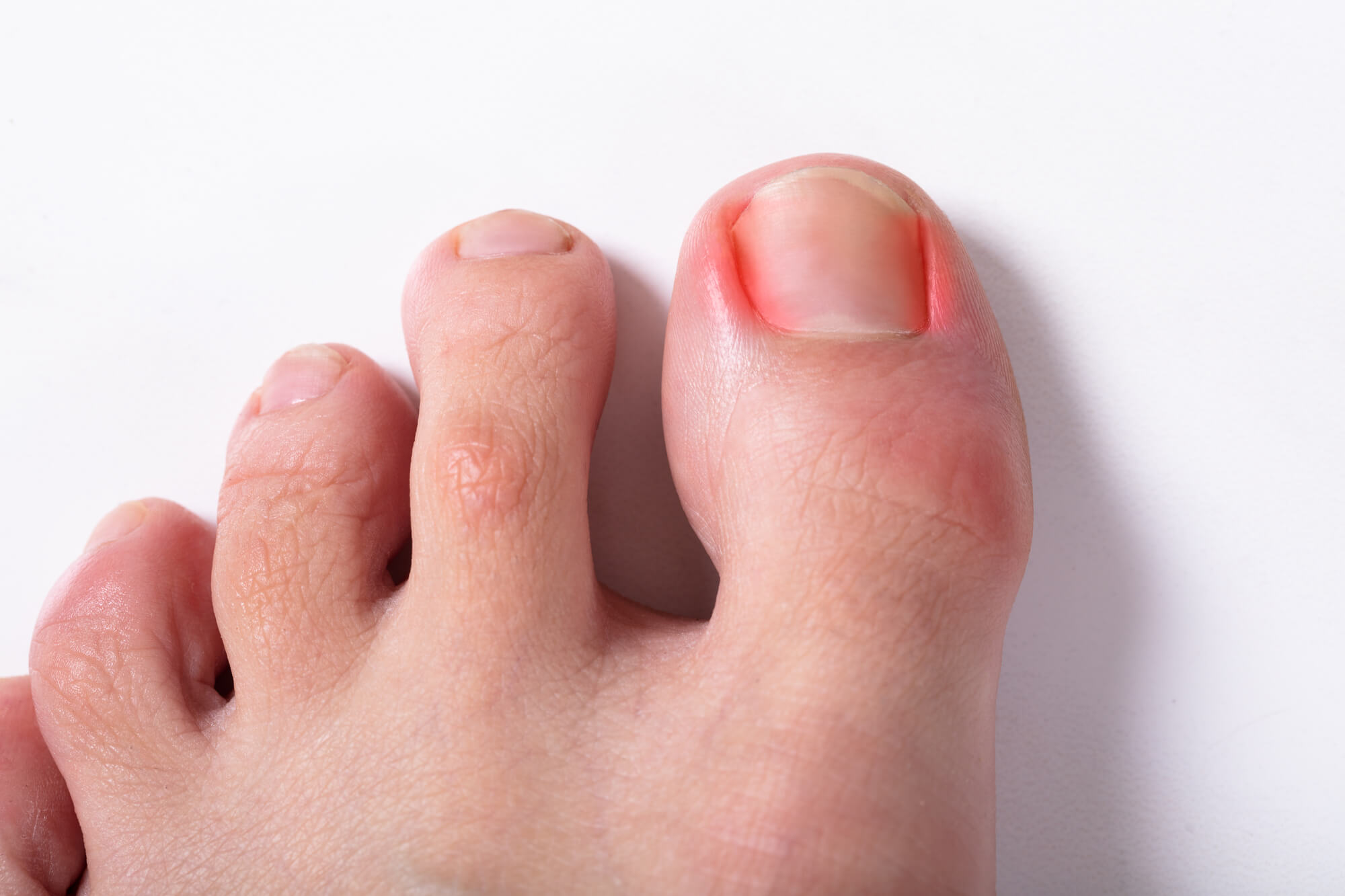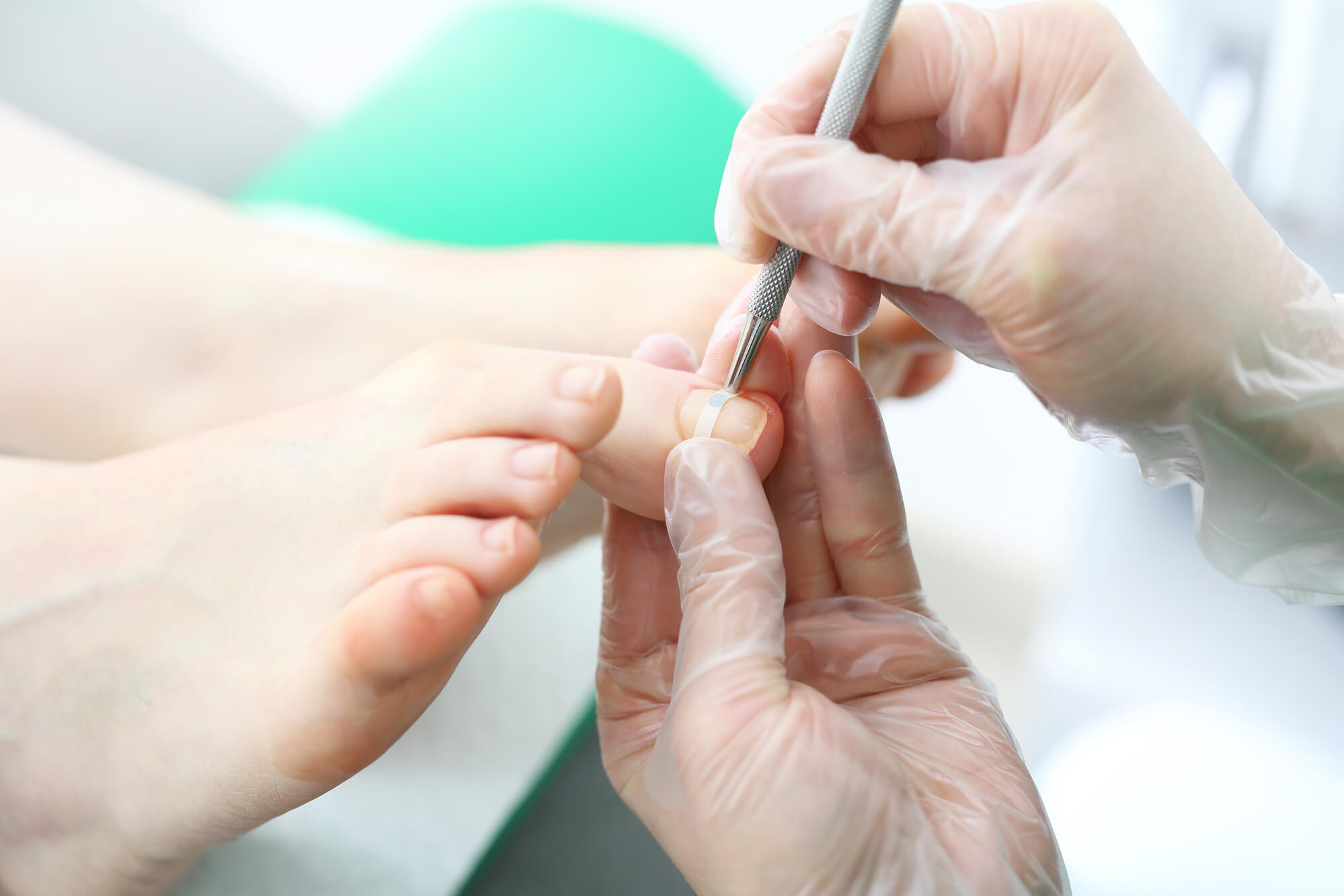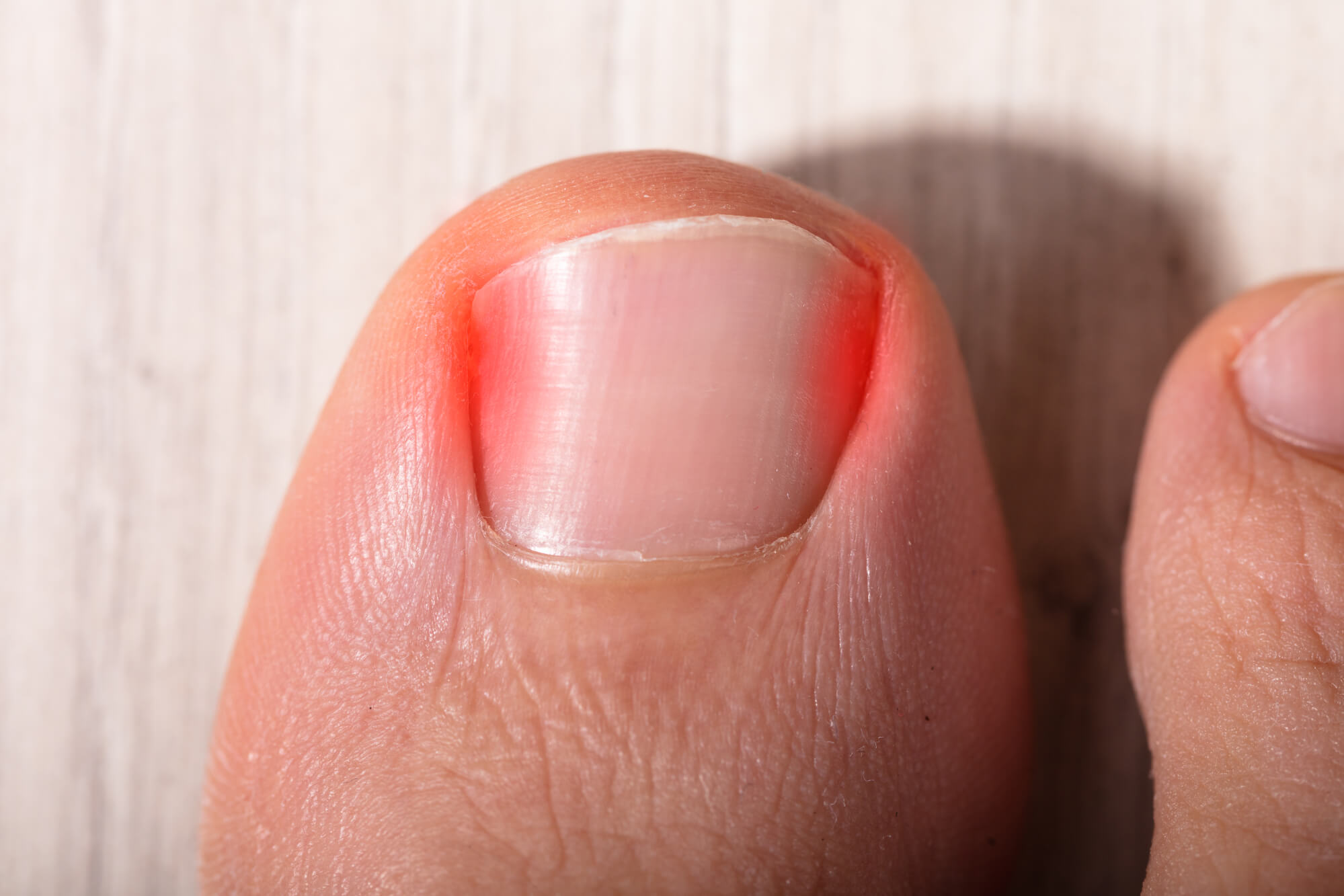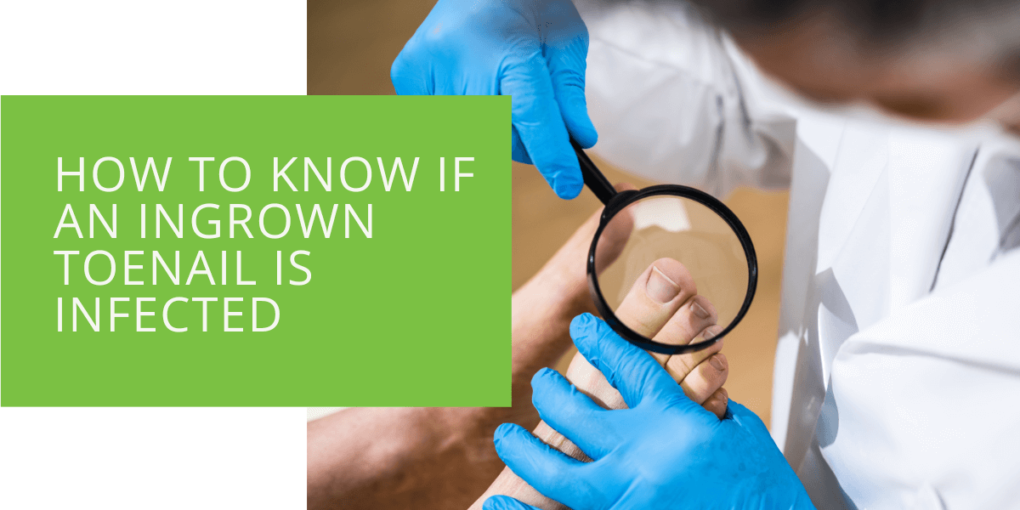How to Know if an Ingrown Toenail is Infected
Ingrown toenails are a common foot problem that can cause discomfort, and pain, and even lead to infections. When the edge of the nail grows into the skin, it can irritate the surrounding tissue and become infected, which can cause even more pain and discomfort. In this article, we will discuss how to know if an ingrown toenail is infected when to seek medical attention, and how to prevent and treat infections from a trusted podiatrist.
What is an Ingrown Toenail?
An ingrown toenail is a common foot problem that occurs when the edge of the nail grows into the skin, causing pain, redness, and swelling around the toe. It usually occur in the big toe, but it can also affect other toes. Some common causes of ingrown toenails include wearing shoes that are too tight, cutting toenails too short, or not cutting them straight across.

Signs of an Infected Ingrown Toenail
Symptoms of an infected ingrown toenail can vary from mild to severe, but they all indicate that the toenail has caused an infection in the skin. If left untreated, the infection can spread to the surrounding tissue and even to the bone, which can lead to more severe complications. Some common symptoms include:
- Pain: Pain is one of the most common symptoms. The pain can range from mild discomfort to sharp, throbbing pain, depending on the severity of the infection. The pain may also become worse when you put pressure on the affected toe.
- Redness and Swelling: The skin around the affected toenail may become red, swollen, and tender to the touch. The swelling can make it difficult to wear shoes or walk comfortably.
- Pus or Drainage: An infection may produce pus or drainage, which can be a sign that the infection has become more severe. Pus may be thick or thin and may be white, yellow, or green in color.
- Foul Odor: An infection can produce a foul odor due to the bacteria causing the infection. If you notice an unpleasant smell coming from your toe, it's a sign that the infection has progressed and needs to be treated.
- Increased Warmth: The skin around the affected toenail may feel warm to the touch, which can be a sign of inflammation and infection.
Fever or Chills: In rare cases, an infection can cause a fever or chills, which are signs that the infection has spread to other parts of the body. If you experience a fever or chills, seek medical attention immediately.
If you notice any of these symptoms, it's important to seek medical attention promptly. Mild infections can usually be treated at home, but severe infections may require antibiotics or even surgery. In the next section, we will discuss when to seek medical attention for an infected ingrown toenail.
When to Seek Medical Attention
If you notice any of the symptoms above, it is important to seek medical attention promptly. Mild infections can usually be treated at home, but severe infections may require antibiotics or even surgery. People who have poor blood flow to the feet, such as those with diabetes, should seek medical attention promptly if they suspect an infection.

Treatment of Ingrown Toenail Infection
The treatment of an infected ingrown toenail will depend on the severity of the infection. Here are some common methods used by podiatrists to treat infected ingrown toenails:
Mild Infections
- Soaking the foot in warm, soapy water can help reduce swelling and relieve pain.
- Antibiotics may be necessary to treat the infection, and can be taken orally or applied topically as a cream or ointment.
For more severe infections, your podiatrist may need to remove the ingrown toenail to prevent the infection from spreading. Depending on the severity of the infection, your podiatrist may also prescribe antibiotics to help clear the infection.
Methods for Removing an Ingrown Toenail
- Partial Nail Avulsion: This method involves removing a portion of the affected toenail using a local anesthetic to numb the area and a specialized tool to remove the portion of the toenail.
- Complete Nail Avulsion: In some cases, the entire toenail may need to be removed to ensure that the infection is properly treated. Complete nail avulsion may also be recommended if the ingrown toenail is a recurrent issue.
- Matrixectomy: If you have recurrent ingrown toenails, your podiatrist may recommend a procedure called a matrixectomy. This involves removing a portion of the nail matrix, which is the area where the nail grows from. By removing this area, the nail will be less likely to grow into the skin and cause future ingrown toenails.
After the ingrown toenail is removed, your podiatrist will provide instructions for proper wound care to ensure that the area heals properly.
Wound Care
Applying antibiotic ointment to the wound and keeping it clean and dry.
- Applying a bandage or dressing to the wound to protect it from further injury.
- Avoiding tight or constricting shoes that may irritate the affected area.
- Keeping weight off the affected foot as much as possible promotes healing.
It's important to note that attempting to remove an ingrown toenail at home can be risky and may lead to more severe complications. It's always best to seek medical attention if you suspect an infected ingrown toenail. Your podiatrist can provide you with a proper diagnosis and treatment plan to help you achieve a full recovery.

Prevention of Ingrown Toenails
To prevent ingrown toenails from developing, it is important to practice proper nail care techniques. You should always cut your toenails straight across, rather than in a curved shape, and avoid cutting them too short. If you have trouble cutting your toenails or are unsure of how to do it properly, your podiatrist can show you how.
It is also important to wear shoes that fit properly and do not put pressure on your toes. Tight shoes can cause your toenails to grow into the skin, leading to ingrown toenails. If you are prone to ingrown nails, consider wearing shoes that have a wider toe box to allow for more room for your toes.
Regular visits to a podiatrist for foot care can also help prevent ingrown toenails and other foot problems. Your podiatrist can examine your feet and offer advice on proper foot care, including how to prevent ingrown toenails.
Conclusion
An ingrown toenail can be a painful foot problem that can lead to infections if left untreated. To prevent ingrown nails from developing, it's important to practice proper nail care techniques, wear properly fitting shoes, and regularly visit your podiatrist. If you suspect an infected ingrown toenail, seek medical attention promptly to prevent more severe complications. Remember, proper foot care can keep your feet healthy and pain-free.

